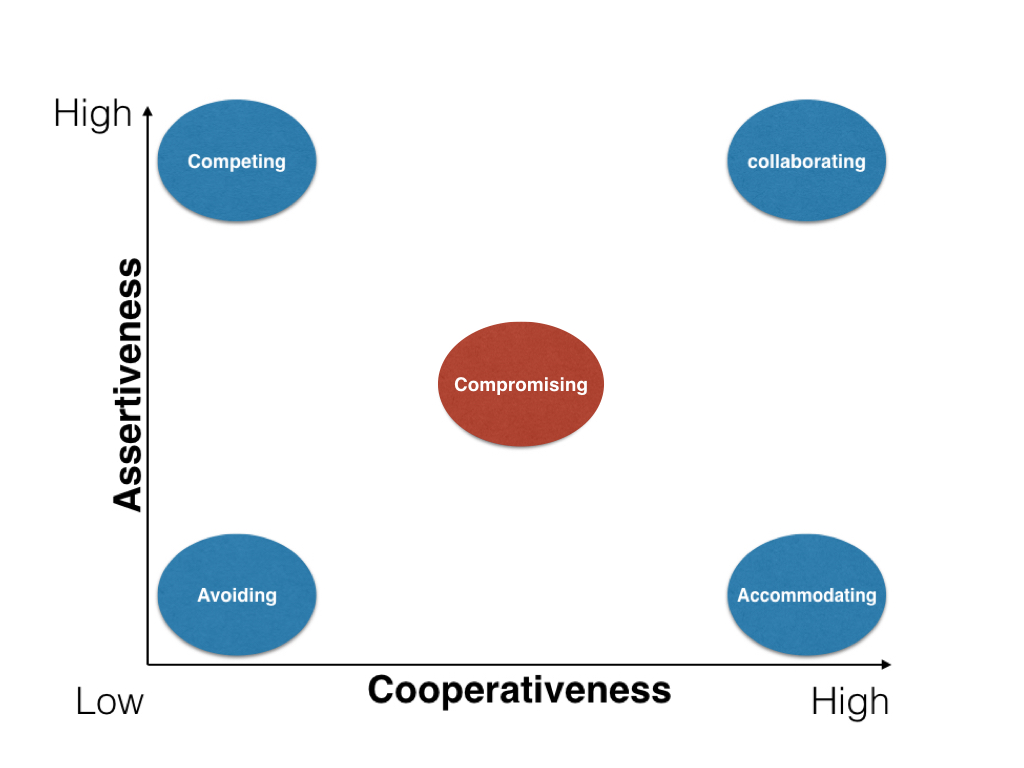Table of Contents |
Recall that there are five different conflict styles. Compromising is a conflict resolution style in which parties agree to sacrifice some of their needs in exchange for having other needs met.
As a style, compromising is:

The nature of compromising positions is at the middle level of both behaviors. Let's look at two examples of compromising as a style.
EXAMPLE 1
With regards to politics, there is hope for compromise so that legislation can be passed. However, with Republicans on one side and Democrats on the other, both feel strongly about their particular positions. Many times, they might come to a stalemate, as we’ve seen happen in Congress. They reach a compromise, perhaps on taxes and spending, and pass legislation. A compromise might be that one side gives a little bit on taxes, and the other gives a little bit on spending.
EXAMPLE 2
You and your spouse are having a disagreement about whether to spend the holidays with your side of the family or with your spouse’s side of the family. It seems like you always see your spouse’s side of the family, but you never see your side of the family. Both involve travel, so you compromise. You decide that every other year you'll spend Thanksgiving with your spouse’s family and vice versa. You give up a little bit of the holidays on your side, and your spouse does the same on his/her side. You’ll alternate in order to divide things equally.
This particular style of conflict has, as all styles do, both positive and negative outcomes.
A positive outcome is a resolution to a conflict that a party perceives as meeting his or her needs and/or reducing the likelihood of further conflict.
A negative outcome is a resolution that the party perceives as not meeting his or her needs and/or increasing the likelihood of further conflict.
Let's go back to the Congress scenario and the holiday travel scenario:
| Scenario | Positive Outcome | Negative Outcome |
|---|---|---|
| Congress | Legislation gets passed and a stalemate is avoided. | Your particular constituents may think they’ve given up too much and there might be some repercussions to pay when they go back to your district. |
| Holiday travel | You get to see both sides of the family, and everybody is going to be included in the holidays this year or the next. | The year you’re supposed to see your partner's family might end up being a special year in your family, and you’re going to have to miss that. Or you feel really bad that you have to wait every other year; you really wish you could visit your family every year. You might feel like you've given up a bit too much.}} |
Source: This tutorial was authored by Sophia Learning. Please see our Terms of Use.